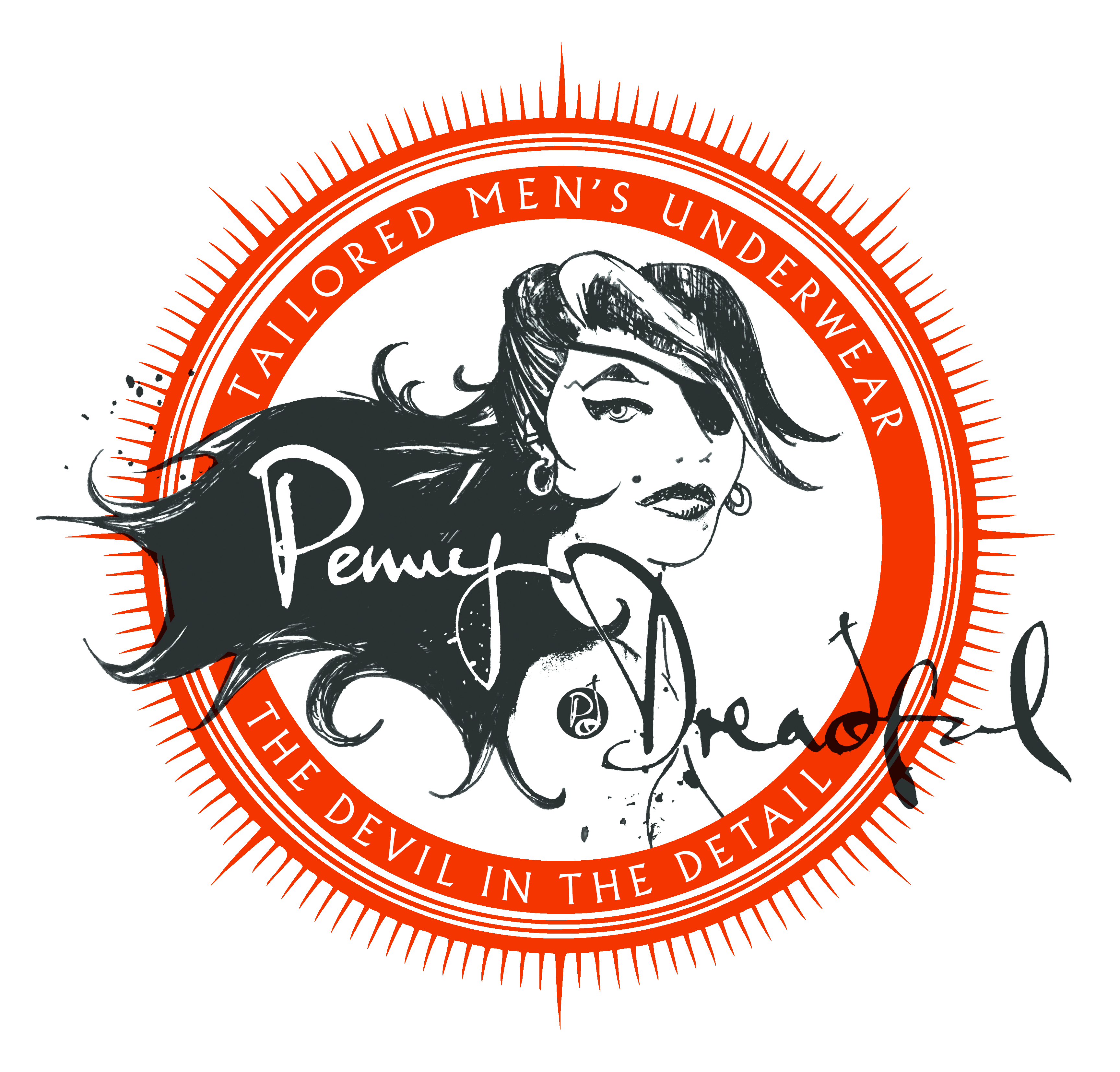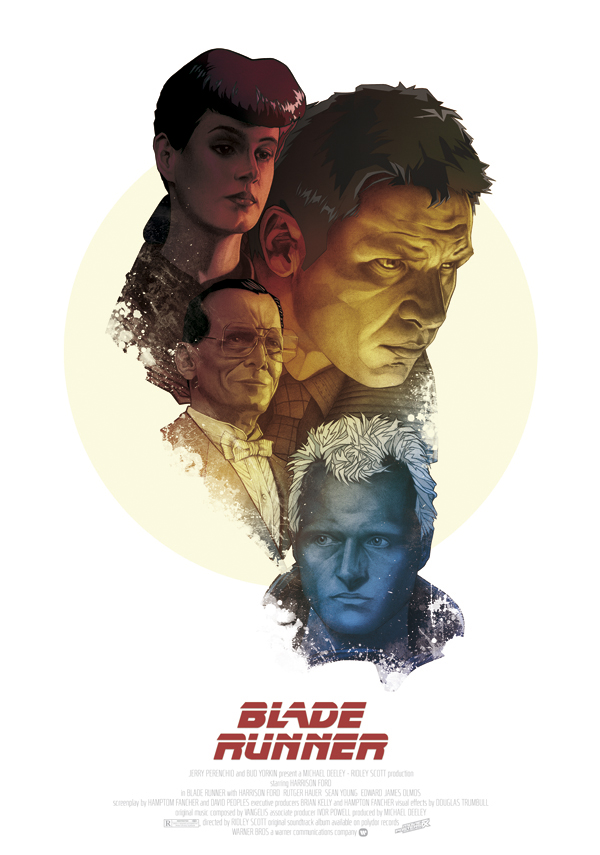Recently I was asked by close friend Paula Benson to write a piece on the art direction of my favourite movie for her frankly brilliant website FilmAndFurniture.co.uk. Being a total obsessive with Ridley Scott’s masterpiece from 1982 I chose Blade Runner.
Here’s the article but do please visit Paula’s site at the link above. It’s an ever growing treasure chest of interesting stuff.
By Matt Cole founder of Penny Dreadful Menswear.
Ridley Scott’s Blade Runner (1982) paints Los Angeles 2019 as a potent, multifaceted hybrid of cultures. The principal influence reflects the 1980’s assumption that Japan’s driving force in technology would see it become the ruling superpower of the future. Omnipresent billboards depict giant geisha girls popping pills to the baleful soundtrack of Japanese folk song Ogi No Mato. This hint of a society controlled by mood-enhancers is one of the few direct links back to Philip K Dick’s “Do Androids Dream Of Electric Sheep.”
At ground level “The Egyptian” Abdul Ben Hassan manufactures Snakes, selling them among replicant ostriches and other exotics in the bustling, bazaar like “Animoid Row” while the Mayan styled Pyramidal buildings of the Tyrell Corporation dominate the skyline, monstrous monuments to the gods of Industry.
The South American influence continues in the blocky Aztec architecture and interior styling of Rick Deckard’s (Harrison Ford) apartment block. The exterior, shot at Frank Lloyd Wright’s “Ennis House” in the Hollywood Hills, is augmented by one of the many extraordinary matte paintings designed by Syd Mead and completed by Matt Yurichich, Rocco Gioffre, and Michele Moen.
Art director David Snyder took Syd Mead’s original “form meets function” hi-tech interior designs and encased them in custom molded replicas of Frank Lloyd Wrights Aztec building blocks creating a multi-textural man-cave perfectly suited to Deckard’s loner personality.
As much as I’m a huge fan of Syd Mead’s industrial sci-fi concept artwork, from Blade Runner to Elysium, it’s the interesting mix of ephemera that Snyder’s team populates Mead’s spaces with that not only authentically depicts the sum contents of a 30 plus divorced male’s life but also injects a sense of personal mystery into an already enigmatic story.
Much has been made of the Art-deco & Art Nouveau influences on the retro-futuristic design of Blade Runner, but it’s true to Ridley Scott’s reputation for perfection in art direction that the vast majority of the early 20th Century pieces in Deckard’s department are genuine. The cost of acquiring Argyle chairs by Charles Rennie MacKintosh and a barely glimpsed Frank Lloyd Wright Coonley Desk probably gave the production manager a small heart attack. Combined with a Panasonic TR-535 pop up TV they build an authentic image of a future heavily influenced by more elegant times long gone.
To achieve maximum Future Noir moodiness Deckard’s apartment features little to no overhead lighting. Instead the surfaces are filled with a myriad of lamps including 3 choice American art-deco examples – a 1940’s Lightolier desk lamp by Gerald Thurston (want!), a strangely kitsch World’s Trade Fair lamp and hovering over the piano where Deckard has his Unicorn reverie is a Dazor Saucer Lamp.
In an age before 3D printing even the future was cobbled together from the present, including the image scanning ESPER Machine, in reality a portable TV with a couple of alarm clocks and what seems to be a Polaroid camera stuck to the side. As a young viewer it was still the coolest piece of tech, lent realism because it seemed second-hand and slightly knackered, screen etched with pen marks.
Elsewhere the past continues to collide with the contemporary in building a convincing future. The story goes that Scott himself found 2019’s answer to the Lazyboy, a huge leather suite with built-in lighting, in a junk sale having recently been removed from an LA Nightclub that had fallen on hard times.
Amongst this wealth of amazing stuff expertly and painstakingly thrown together to create the perfect mess of a dysfunctional bachelor pad there are 2 items I’ve come to covet most over my 50 or so viewings of Blade Runner. Both of which are the vessels that transport the fuel of Deckard’s burgeoning alcoholism. The shot glass tainted with blood after Deckard’s violent run in with Leon originally formed part of an elaborate set by the wonderfully named United Metal Goods from the 50’s. In my favourite shot from the film, standing on the apartment balcony, hundreds of stories above the city Rick reflects on cruelly bursting Rachel’s faux-human bubble. For one fleeting moment Deckard leans over as if he might jump. The glass in his hand is a 1974 Arnolfo di Cambio CIBI tumbler. Look at it glowering in that promo image. That’s a serious Whiskey glass surely built with Future-Noir, Replicant Hunting, Killer Cops in mind.
It’s more than likely that Snyder and his team had a very tight brief from Ridley Scott according to his overall vision for the style and texture of LA 2019 and all these disparate items came together like a jigsaw puzzle, piece by piece to create a cohesive whole that looked great on camera. But I have a theory. Bear with me.
Deckard’s apartment is crammed full of not just a selection of choice furniture, elegant lamps and shonky old portable TV’s. Rick’s also got a fair few knick-knacks like this carved wooden rhino.
Now does “One man slaughterhouse” Blade Runner Rick Deckard strike you as the kind of guy who’d spend his weekends browsing through antique fairs and car boot sales looking for wooden Rhinos and art deco dining chairs? Well maybe. Replicants are collectors, empty vessels constantly trying to build an identity. Leon compiles memories in a literal way with his “precious photos”. Rachel also carries a photo of “her mother” as proof that she had one and Deckard’s piano is loaded with seemingly random snaps, some incongruously black and white next to holographic prints. Perhaps despite being oblivious to his Replicant origin Deckard is filling his home with items harboring their own pasts and stories in a subconscious attempt to fabricate a soul?
Or maybe he just rents the pad fully-furnished. Who knows.
Matt Cole
(with much thanks to the true Blade Runner obsessives at PropSummit.com)
Matt is founder of Penny Dreadful Menswear and a card carrying geek.



















